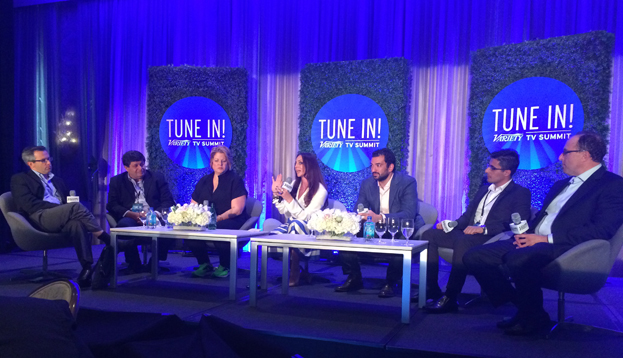At Variety’s sold out Tune In! TV Summit in Beverly Hills, TV executives shared the stage with some new media company representatives from the likes of Facebook and Twitter to talk about what is still great about the medium.
“We have started to think of TV as an art form and not a platform. We should look at impact and not viewers and impressions,” said Kern Schireson, EVP, Data Strategy & Consumer Intelligence at Viacom.
“We don’t want to lose the power of TV, for us as storytellers and for our advertisers, which is not just about scale, but about creating culturally impactful moments of time.”
Brian Robbins, Founder and CEO, Awesomeness TV, gave his colleagues in the TV industry a quick reality check on a panel titled “State of the Multiplatform Television Industry” where he represented the voice of millennial audience:
“I haven’t watched linear television for so long, but I happened to do it last night. I realized how long it’s been, because when a commercial came on and interrupted the show I was surprised. What a horrible user experience!”
To that point, the business model in television is still heavily based on selling 30-second commercial spots in and around linear programming on broadcast as well as cable television shows. Why? Because it still works.
Even digital-savvy advertisers from mobile game companies like Supercell and King are shelling out big bucks for traditional TV commercials in the U.S. because it is an effective way for them to reach the masses they need to bring in new players to their games.
Even with technology like DVRs allowing viewers to opt out of commercials and subscription services such as Netflix making binge-watching possible without commercials, the 30-second spot will probably be around for a while longer.
The new way is to think about it, though, is not as the holy grail of marketing, but rather as the megaphone through which you bring the audience to digital platforms.
“I see Twitter as the world’s largest couch. We create that sense of community and water-cooler effect around TV shows,” said Andrew Adashek, Head of Television for Twitter.
“Television companies want to know where the show goes after that short moment of time on-air. If we just all collectively agree on how to measure that off-air engagement and we would unlock a whole new universe for storytelling.”
[a]listdaily is a media partner for Tune In! To read more Tweets from the event, check out #TVSUMMIT tweets.
